Hong Kong Watch and Clock Fair: Wrap Up and Industry Outlook
The 43rd Hong Kong Watches and Clocks Exhibition closed its analog doors on Sunday, September 7th at the end of six intense days interrupted briefly by the threat of super-typhoon Yagi, which strafed Hong Kong on its way westward.
I say analog, because, smartly, the organizers have created a hybrid fair extension called Click2Match allowing those who had not been able to participate or still have unfinished business to continue interacting and transacting online until mid-September.
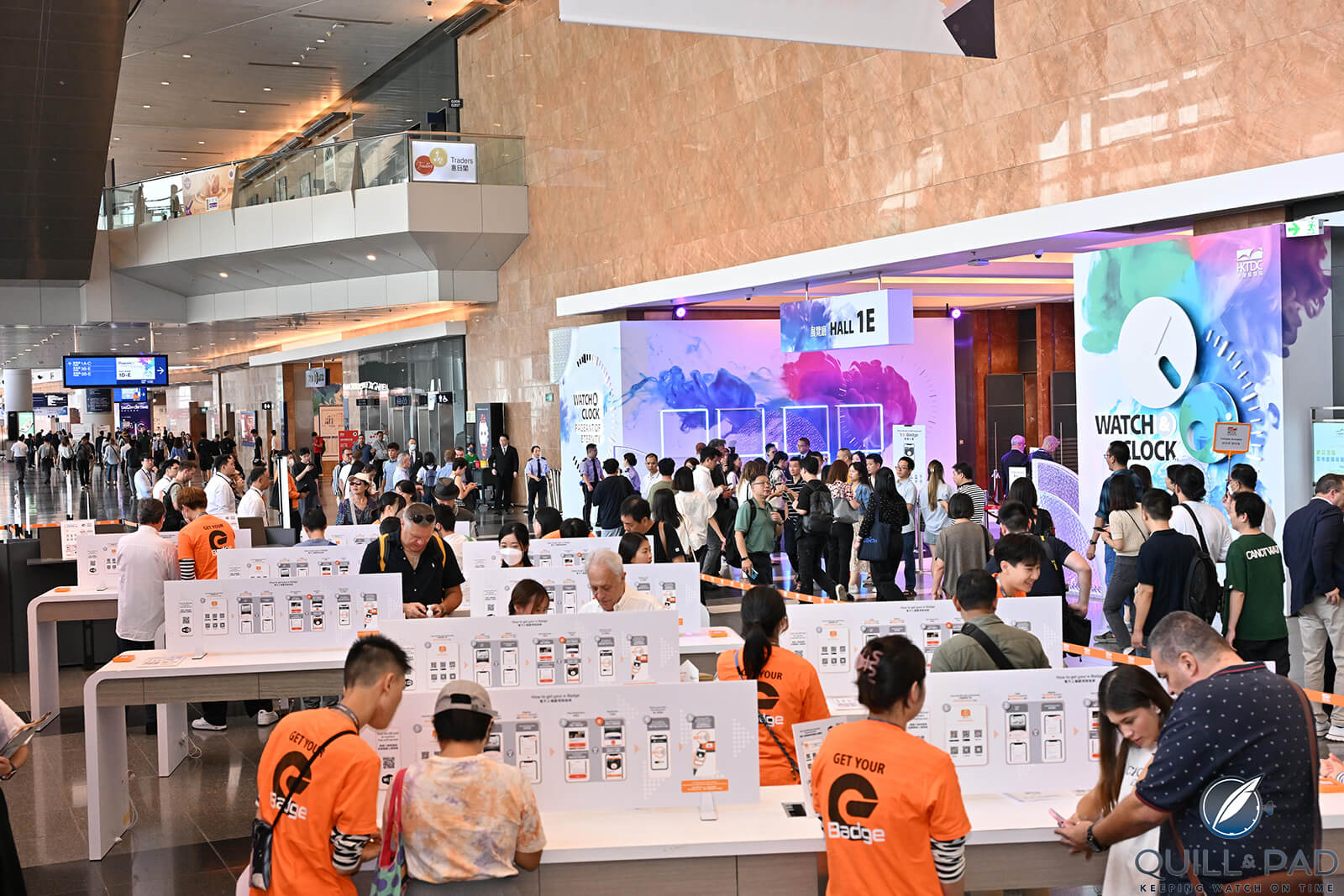
HLCWF connecting with companies electronically at the Hong Kong Clock and Watch Fair
The figures released by the organizers recount a fairly solid story: Over 700 exhibitors from 106 countries and regions showed up representing the entire spectrum of the watchmaking supply chain. They included around 130 brands and retail groups exhibiting their wares, including ten from the Swiss SIWP and eight from France.
The fair was also visited by over 17,000 trade buyers, meaning business was brisk. The Salon de Time, hall to watch brands, was also open to the public, which meant that it was well visited at times.
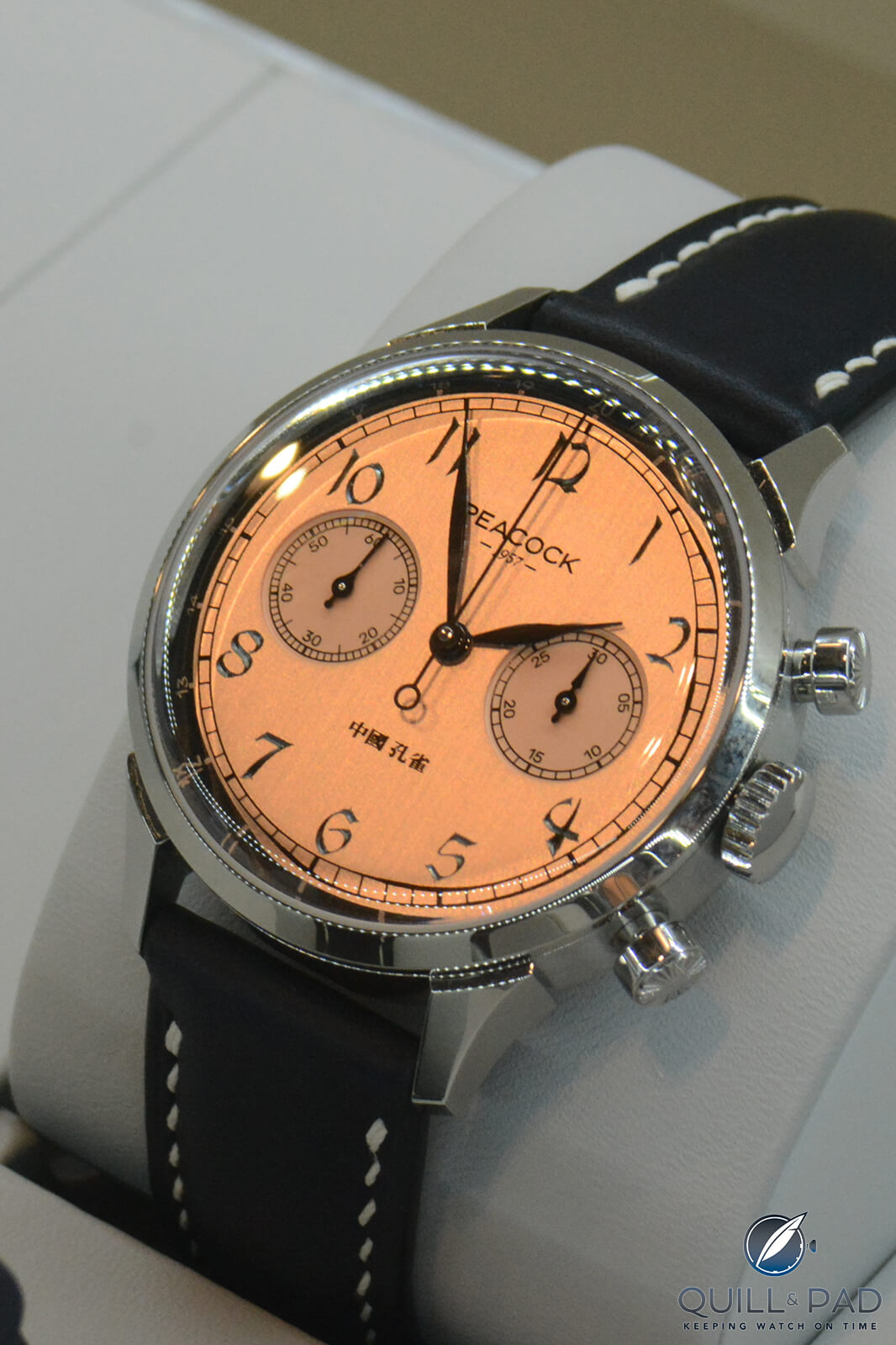
Peacock Chronograph with vintage look
My previous post covered some of the brands and their aesthetic whimsies, so it’s time to discuss some of the overarching themes gleaned from the various forums and chance meetings about the current state of the watch industry generally and what trends might be moving our beloved industry in the near future.
————————————————————————————————————–
—————————————————————————————————–
Whither the watch
Anyone even cursorily following trade news of late will know one thing: 2024 has been a bumpy year for timepieces. The haut-de-game segment has suffered less, of course, but for a good reason. As one insider told me during a casual meeting: “During the pandemic, people had time to look at watches and money to buy them. Now they are putting their money in trips.”
In other words, if you have a few millions of petty cash lying around, you can allocate some to a nice timepiece.
This was all confirmed at the Hong Kong International Watch Forum by watch federation representatives from China, Japan, South Korea, Switzerland, France, Great Britain, and local associations.
The figures for watches sold, components, and so on, in the first six months of 2024 were not positive, but signs for the second half of the year suggest a recovery. Japan, apparently, is the only country that seems to have weathered the downturn.
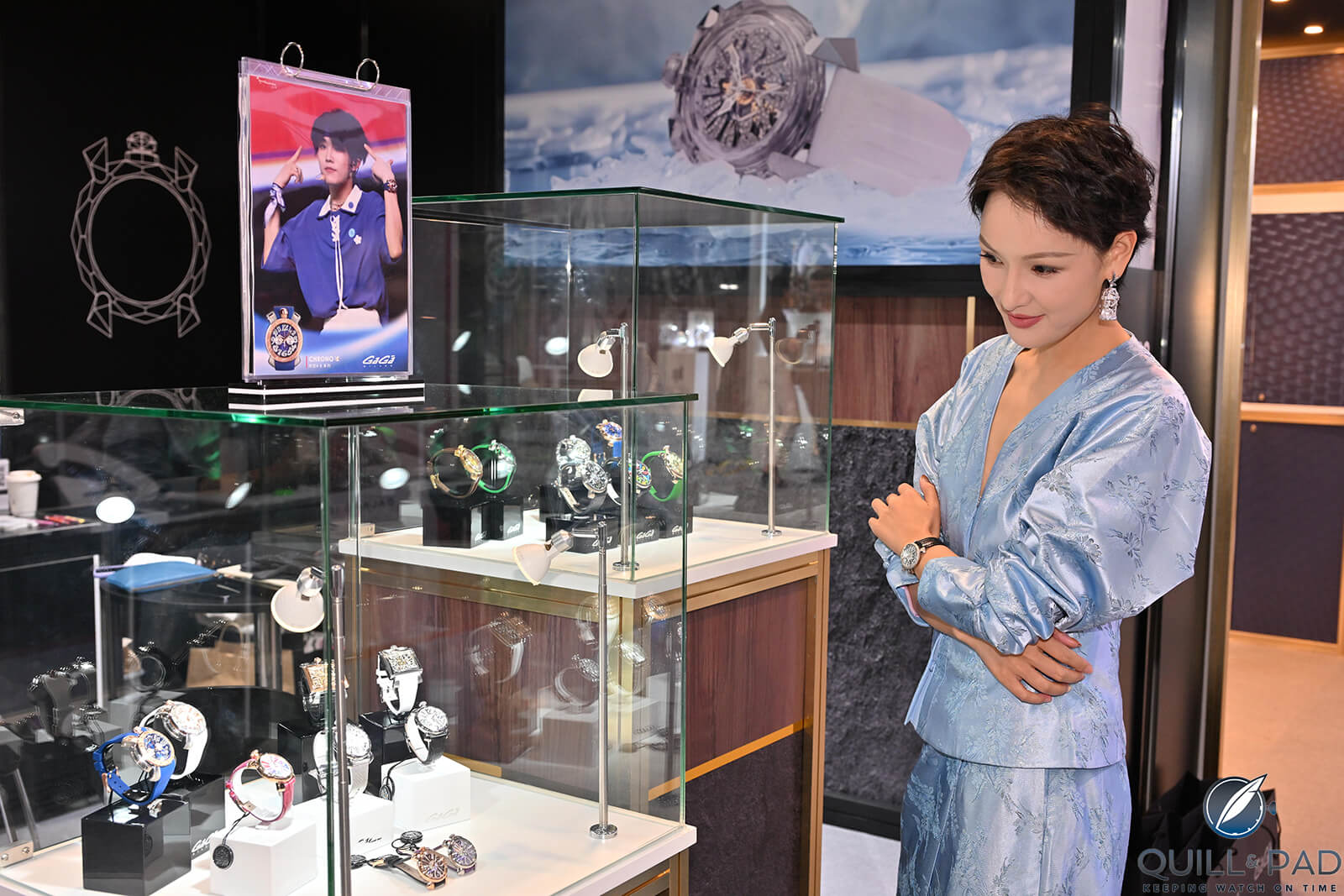
Hong Kong Clock and Watch Fair
Great Britain rising?
As an interesting aside during this discussion, Alistair Audsley, co-founder and CEO of the British Watch and Clock Makers association did add some context. The British industry, which produced half of the world’s watches in the mid-nineteenth century, had all but died out by 1970.
In the past few years, however, it has made a comeback, with now just over 100 brands generating total sales of £2.1 billion. A quarter of those brands are under three years old and many, he pointed out, have been launched by people outside the industry, which now employs 840 people.
The outlook is good, with projected growth of over 3% in the coming years, but the challenges are great as well. British watchmakers rely on an international supply chain for parts, and they still lack proper physical retail sales experience.
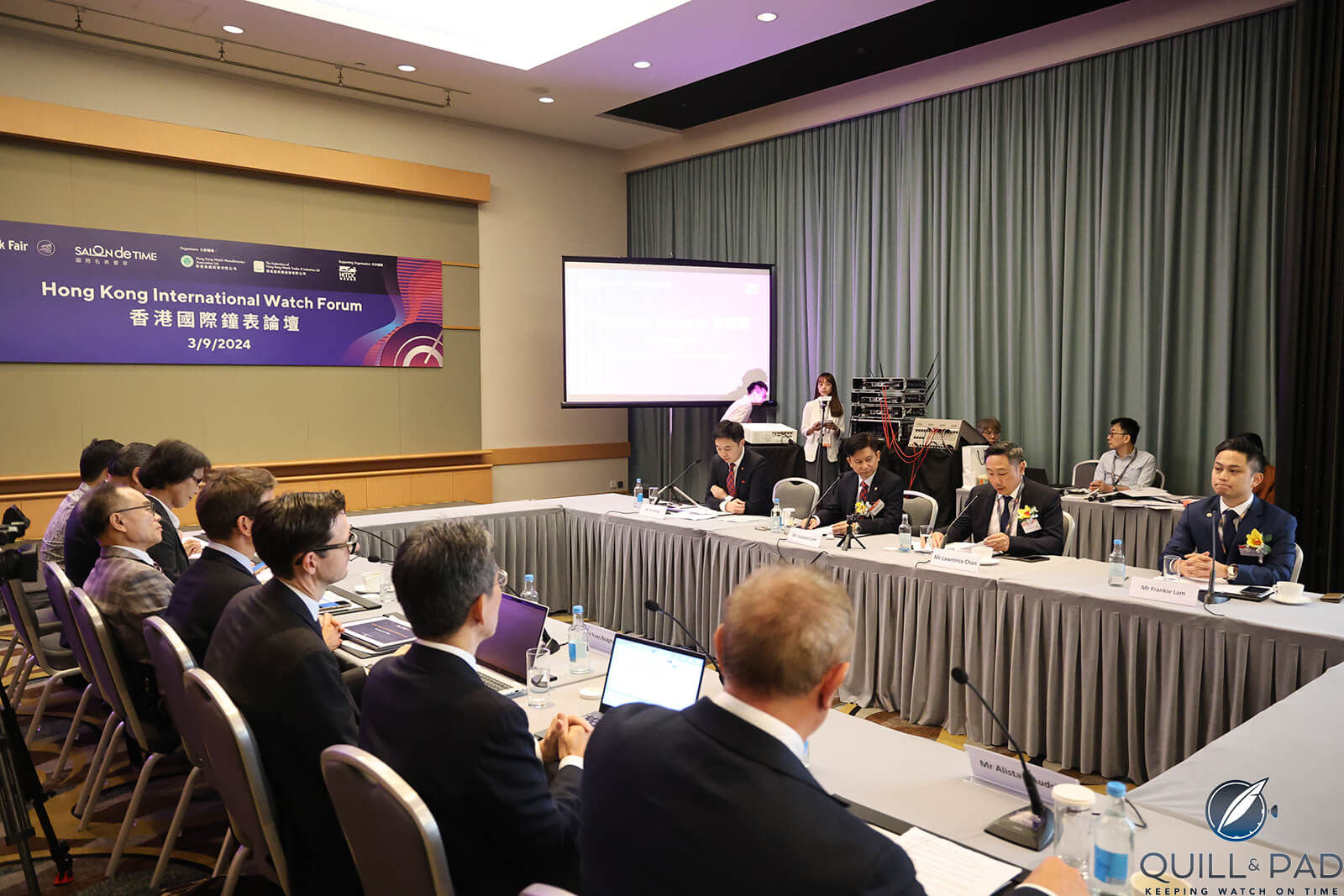
Hong Kong International Watch forum
A few trends were explored in greater depth at the Asian Watch Conference. According to Euromonitor, a global market research company, emerging markets notably in the Asian-Pacific region (APAC) are showing promise. Rising incomes in these regions often translates as a quest for fashion accessories.
To take advantage of this, said Senior Research Analyst Clifton Chiu, innovations will be necessary in the online and offline experience of consumers, which is particularly important
He mentioned as an example Audemars Piguet boutiques designed to look like living rooms. In the aesthetics department, the favored style for traditional watch brands – not smartwatches and other electronic wrist devices – is still vintage, because it expresses “durability and individuality.”
Not surprisingly, a majority of respondents to the survey also had a special liking for “nostalgia and cultural connection.”
—————————————————————————————————–
—————————————————————————————————–
West and East
Many western brands have been wooing the Asian buyer in this manner, mostly by celebrating somewhat obvious Chinese cultural icons like the astrological signs or the lucky number 8 on watches headed east.
When I asked about the topic of guo chao, the “national trend” that has been coursing through fashion in China, Mr Zhang Hong-guang of the China Horloge Association suggested politely that to benefit from this form of national pride, brands should really “get to know Chinese culture well,” i.e., not just superficially.
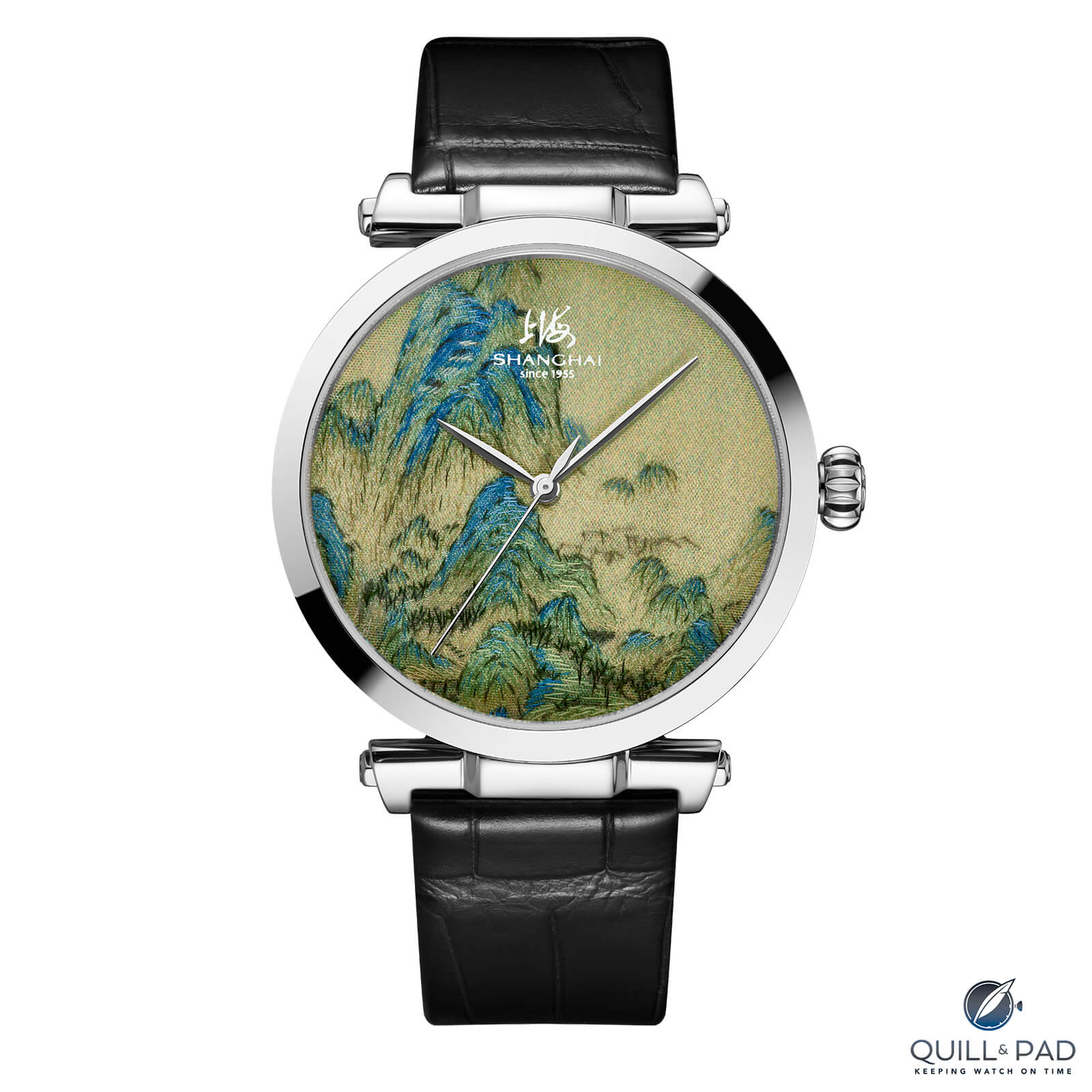
Shanghai Watch One Thousand Li and Mountains
He exemplified this with a hit Chinese watch from 2022 – the brand was Shanghai Watch Co., I suspect – that featured a fragment of the famous Chinese painting by Wang Ximeng (1096-1119) “One Thousand Li of Rivers and Mountains.”
The Euromonitor research received some unexpected support from an on-site survey by the Hong Kong Trade Development Council (HKTDC) with some 900 exhibitors and buyers. It found that 42% of respondents expect overall sales to grow over the next 12-24 months, while 47% expect sales to remain unchanged.
Japan, Taiwan, Australia and the Pacific Islands, and South Korea were seen as offering the best growth prospects over next two years among traditional markets, while ASEAN, the Middle East and India were seen as offering the most promising growth prospects over the next two years.
The signal for brands looking to tap new markets is clear: concentrate, learn, and look eastward.
—————————————————————————————————–
—————————————————————————————————–
The green-brick road ahead
Another important issue with consumers across the globe research has shown is sustainability. Among colleagues in the press room, we discussed what this means exactly. For instance, what’s the point of saving a kilogram of carbon making a watch and then shipping the product across the globe or having the CEO of a company flying around in a private jet.
Yes, there is a great deal of cognitive dissonance in the green debate, but both Yves Bugmann of the Swiss Federation, and the aforementioned Alistair Audsley pointed out the inherent sustainability of a so-called luxury or mechanical watch: They are made to last and are passed on through generations.
This point was made repeatedly by several members of the panel, notably Kuzuhiko Fusuki, General Manager of the Japan Clock and Watch Association, who said: “The consumer for analog watches is narrow but deep.”
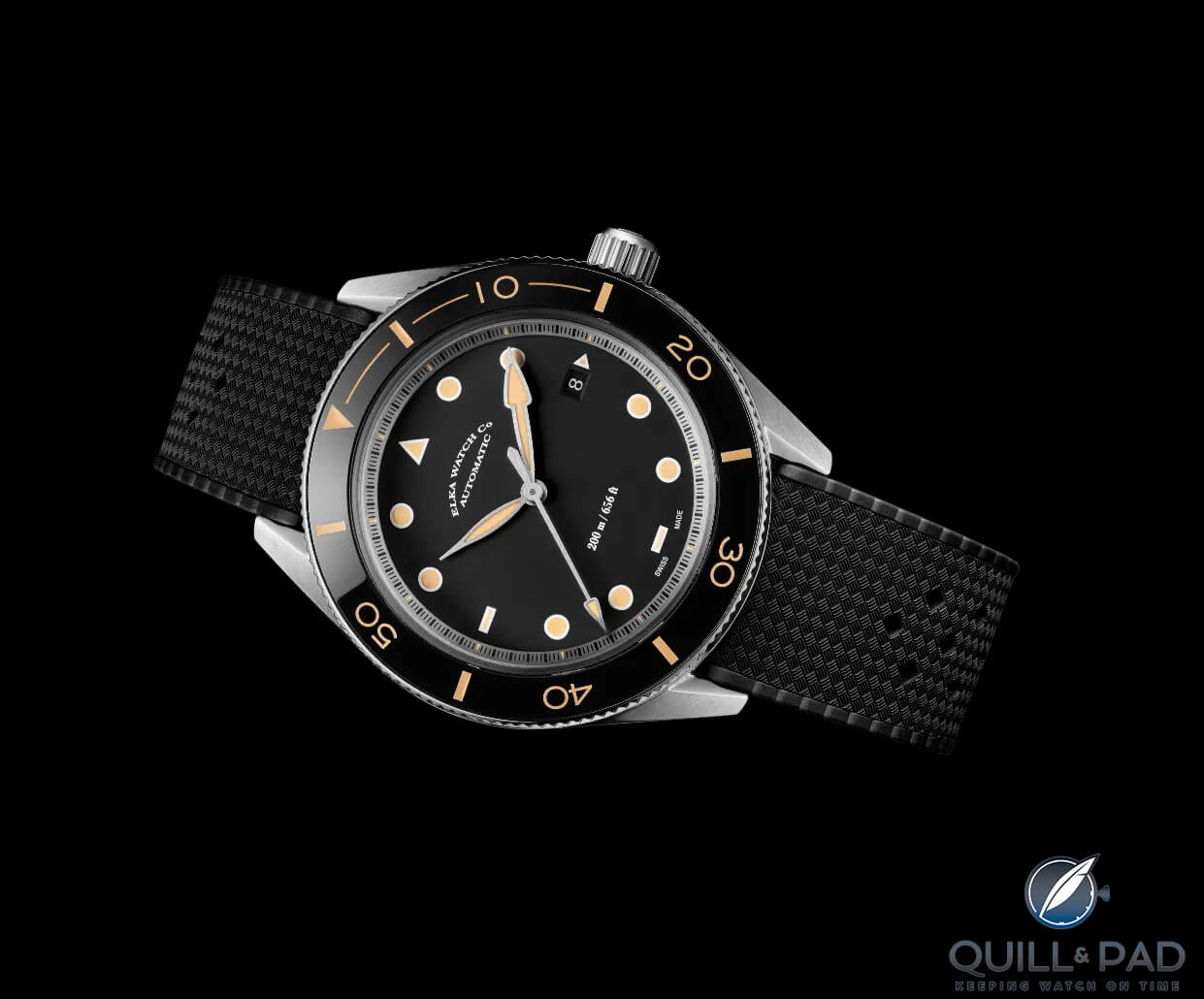
Elka Watch Vintage with timeless style
I sat down for a coffee with Hakim Elk Kadiri of Swiss brand Elka Watch Co. He was wearing one of his Arinis watches, which is unabashedly in ‘60s design.

Elka Watch cardboard packaging
“One big part of the problem is packaging,” he said with regard to materials, which he considers a selling point. “Some brands think their watch has to come in a huge box. I sell mine in a small recyclable cardboard box, and customers have praised me for that.”
—————————————————————————————————–
—————————————————————————————————–
Finale
While the impact of all these measures may not be very noticeable in atoms and molecules, there was consensus on the idea that the industry has a chance show leadership by ensuring, for example, that they are applying the precepts of the circular economy, with emphasis on recycling, and that their material is ethically sourced or properly recycled.
Many brands are already vaunting their special gold, recycled steel, or straps made from all sorts of recycled materials. Lilienthal, a German brand, was exhibiting a watch with a case made of recycled coffee grounds, a slightly strange idea, since coffee grounds are eminently compostable… But some just have to show what is possible with technology these days.
Moreover, as, Pierre Burgun, CEO of Pierre Lannier watches from Alsace, said, sustainability is a very broad concept that must be applied broadly and should involve CSR and other industrial areas beyond the product, like supporting courses of study in watchmaking, and the like.
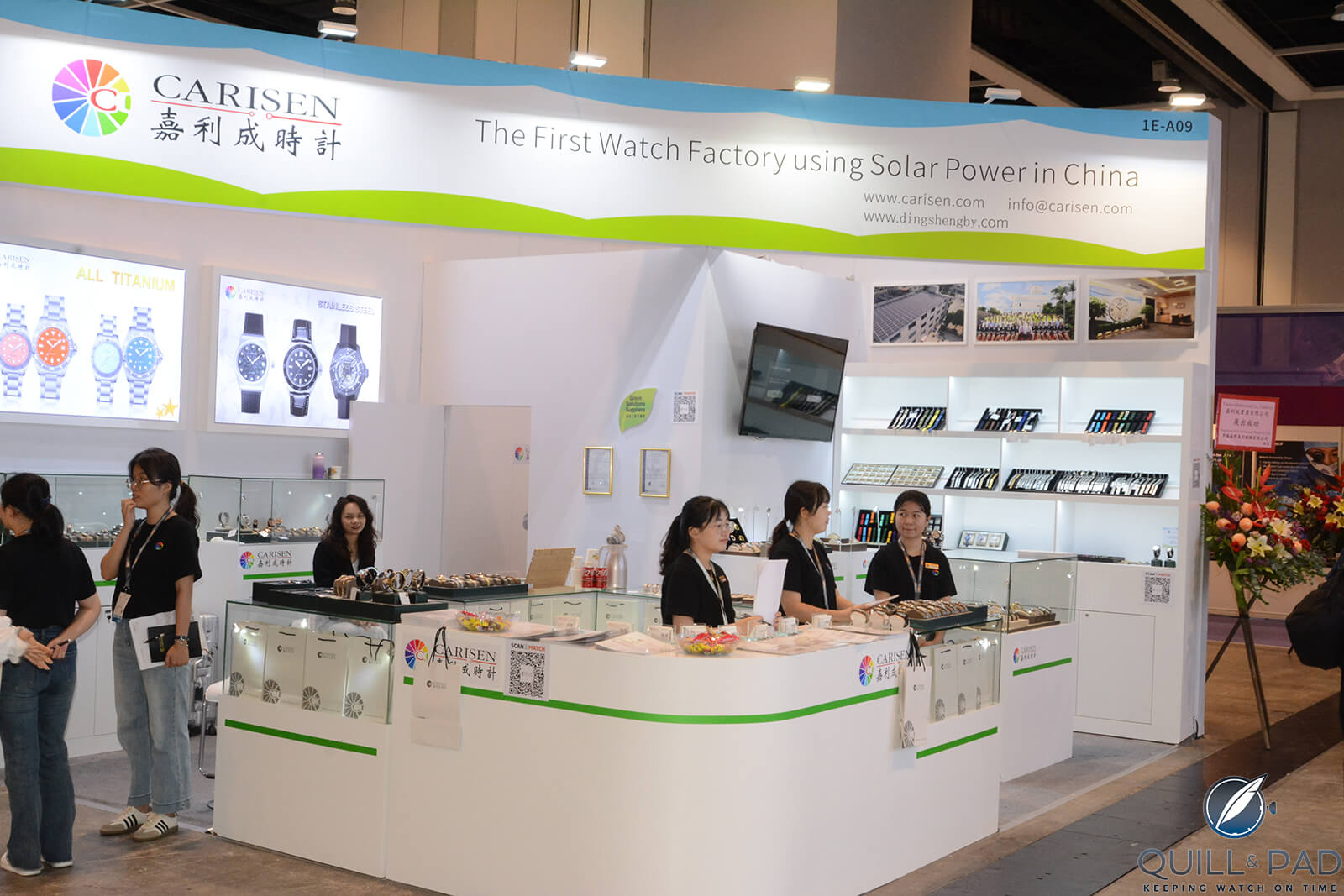
Solar power as a USP at the Hong Kong Clock and Watch Fair
Many decisions were made, lots of material was bought and sold, information flowed. One key takeaway is that these types of events are very important, especially with a product like a watch, whose qualities can only be partially felt in the virtual space.
They also permit interaction with other views, other cultures, other ideas, and other products. It’s all fine and well to loftily promote thinking out of the box.
Sometimes, given all our electronic communication without leaving one’s chair, getting out of the office and visiting a broadband trade fair like the HKCWF is just what the doctor ordered.
For more information, please visit www.hktdc.com/event/hkwatchfair/en
You might also enjoy:
Hong Kong Clock and Watch Fair: A Party with Benefits, plus a Typhoon!
Hong Kong Takes Time with the 2024 Clock and Watch Fair (HKCWF) 3-7 September
The Re-Edition/Reissue Issue: Living in the Shadow of the Original
Cartier Santos Review: The Luxury Sports Watch You Might Not Have Considered
Leave a Reply
Want to join the discussion?Feel free to contribute!



What a bunch of horse feathers! Propaganda as virtue. Recycled and sustainable materials as virtue of the new world order, as these watch brands try to sell themselves with ever more outlandish backstories added to their already made up stories about their gear. But, I suppose there’s a sucker born every minute for it.
Hello, Mr Magoo.
Thank you for the comment. It is, of course an opinion, but perhaps one that needs a little back-up with some facts and perhaps a somewhat more rational tone to be credible.
Hello Mr. Magoo,
I agree 100% with you. 🙂
KR Patrick Weigert